Tomoderinae
Dmitry Telnov- Bogosus Pic, 1894
- Elgonidium Basilewsky, 1954
- Holcopyge Champion, 1890
- Macrotomoderus Pic, 1901
- Pseudotomoderus Pic, 1892
- Rimaderus Bonadona, 1978
- Tomoderus LaFerté-Sénectère, 1849
Introduction
The Tomoderinae is a typically circumtropical group with only a few representatives occuring in temperate regions. This group is morphologically very distinct due to the presence of often very deep lateral impressions on the pronotum, separating it into anterior and posterior (basal) lobes, and also due to strongly reduced tibial spurs. Seven genera are placed in this subfamily, among them - cosmopolitan Tomoderus and six genera with geographically more restricted distribution. More than 350 recent species and a single fossil record from Baltic amber are known.
Characteristics
Dorsal surface of the body usually only sparsely pubescend and glossy.
Frontoclypeal suture present or absent; if present then variably developed, if lacking, then replaced by transverse impression. Mandibles bidentate apically. Neck is narrow, usually less than 1/3 of maximum head width.
Right antenna of Macrotomoderus brevitaticornis (Telnov, 2004). © 2007 Dmitry Telnov.
Pronotum with thin anterior rim, strongly to very strongly constricted laterally and separated into two lobes - anterior and posterior (basal). Antebasal sulcus only indicated laterally near hypomeron. Mesosternum small and short.
Elytra flattened (Pseudotomoderus, Rimaderus) to strongly globose (Holcopyge, most of Macrotomoderus). Metacoxae broadly separated by acute to broadly rounded intercoxal projection.
Tibial spurs strongly reduced to apparently absent.
Male genitalia with phallobase only rarely being distinct, mostly fused to tegmen. Lateral margins of tegmen sometimes curved dorsally and encloses penis. Sternite IX simple (asymmetric rim) to Y-shaped.

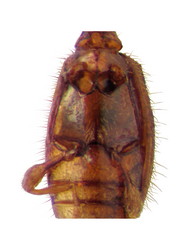
Meso- and metathorax of Macrotomoderus microgracilicollis Telnov, 2007. © 2007 Dmitry Telnov.
Classification
Note: all taxa below are listed alphabetically.
- Bogosus Pic, 1894 - Africa
- Elgonidium Basilewsky, 1954 - Kenya, Uganda
- Holcopyge Champion, 1890 - Central America
- Macrotomoderus Pic, 1901 (= Derarimus Bonadona, 1978) - Japan, China, Himalaya, SE Asia
- Pseudotomoderus Pic, 1892 - Africa, southern Eurasia, Australia
- Rimaderus Bonadona, 1978 - Himalaya, India, Thailand
- Tomoderus LaFerté-Sénectère, 1849 - circumtropical with few species in temperate regions
Biology and Ecology
Most Tomoderinae are typically epigeic organisms, but many of them also inhabit the tree canopy or rotten wood. Many species are good flyers and inhabit large areas, another is completely wingless and restricted to certain patches of rainforest. There are both diurnal and nocturnal species among the Tomoderinae. Representatives of the subfamily are either detritophagous or omnivorous.
Typical habitat of Tomoderus shkarupini on Misool island, E Indonesia. © 2009 .
Telnov (2005) identified the following five ecological groups of the Oriental and Indo-Australian Tomoderinae according to their preferred microhabitats:
- inhabitants of rainforest canopy, epyphytes, tree hollows and bark holes;
- inhabitants of dry but standing vegetation, dry leaves of trees and bushes;
- inhabitants of the upper soil level and fallen leaves;
- myrmeco- and termitophile species;
- species of riparian detritus.
References
Telnov D. 2005. Anthicidae (Coleoptera) aus Sulawesi: Ergebnisse des „Project Wallace“ der Royal Entomological Society of London. Teil 1 (Coleoptera: Anthicidae: Tomoderinae). - Mitteilungen des Internationalen Entomologischen Vereins e.V. 30, No. 3/4: 89-132.
Title Illustrations

About This Page
Dmitry Telnov

The Entomological Society of Latvia
Correspondence regarding this page should be directed to Dmitry Telnov at
Page copyright © 2011 Dmitry Telnov
All Rights Reserved.
- First online 06 January 2011
- Content changed 06 January 2011
Citing this page:
Telnov, Dmitry. 2011. Tomoderinae. Version 06 January 2011 (under construction). http://tolweb.org/Tomoderinae/145029/2011.01.06 in The Tree of Life Web Project, http://tolweb.org/




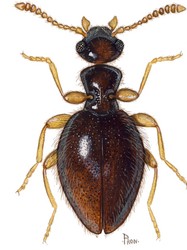
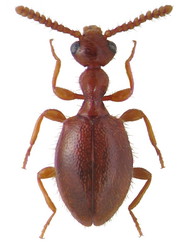
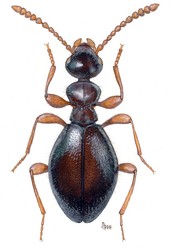
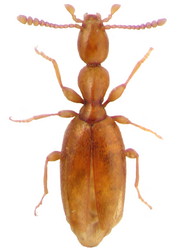
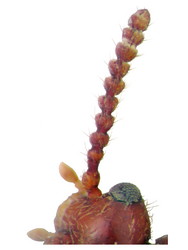
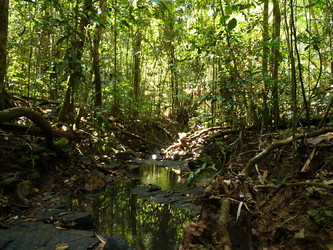






 Go to quick links
Go to quick search
Go to navigation for this section of the ToL site
Go to detailed links for the ToL site
Go to quick links
Go to quick search
Go to navigation for this section of the ToL site
Go to detailed links for the ToL site